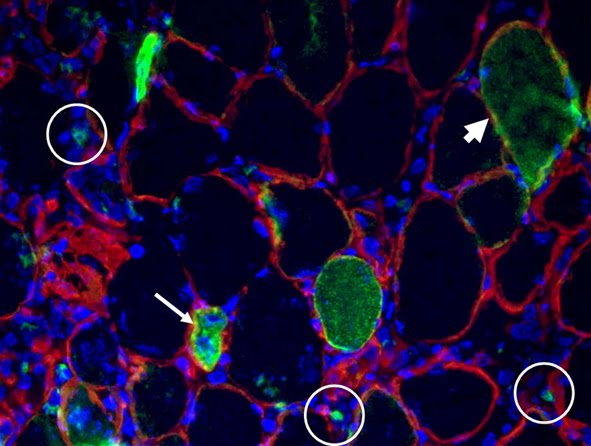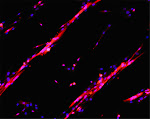

We are having a hot debate on the whole university system in Italy nowadays. Lavoce. info, the best online magazine in our country, is covering the issue -the last article on this topic is by Daniele Checci and Tullio Jappelli.
ANPRI, a National Association of Researchers has organzied a workshop in Rome last year, entitled "A Future for the Italian Public Research: Autonomy, Evaluation, Resources". Linked to the title of this post there is the presentation which represents my contribution. Below, the English version of the corresponding text. FIGURE LEGEND. Yearly impact factor of my publications plotted over the months I spent abroad (as compared to Italy) in the same year.
ANRPI WORKSHOP: Rome, Nov 24 2008
STAYING OR LEAVING (AGAIN): A HARD CHOICE
The following is a witness. As a scientist who does research in Italy and abroad I am able to highlight some data on my activity in the two environments. I hope this rationalization process can be useful to me for strategic choices in the next future and to others for discussion. I present my personal experience. In a scientific report, the following would be a case report rather than an epidemiologic study.
I am male, 37 year old, I am an Italian citizen, married with 1 child. Following the MS in Biology, summa cum laude, at the Sapienza University of Rome (1995) I did my PhD in Cell Science and Morphogenesis at the same University (2000). During the doctorate, I was visiting scholar at Stanford University, CA. My postdoctoral training was done at the Mount Sinai Hospital, NY (2000-2003). Back in Italy (2004) with the brain storming program “Rientro dei Cervelli”, I was contract professor. In 2007 I was invited researcher at the University of Paris VI-PMC. From 2005 I have a tenured position as research associate at the Sapienza University of Rome. I am responsible of the laboratories of electron microscopy and calcium imaging, I teach at the School of Dentistry, I am member of the editorial board of Basic and Applied Myology, member of scientific societies and author of articles published in peer-reviewed international journals. In brief, I do research in an international context.
When did I perform the best researches of my career? To answer this question, I evaluated my scientific production by mean of the Impact Factor (IF), an empiric evaluation factor calculated by the Institute for Scientific Information. The IF mainly refers to the frequency of citations the articles published in a given journal generate, assuming that this fact mirrors the “impact” of the articles on the scientific community. This being said, the IF is often used as a mean to assess the quality of the scientific production of a given researcher, on the basis of the assumption that any article published in journals with high IF is also relevant.
The figure (bar graph)depicts the kinetics of two variables of my professional life: the months/year abroad (red bars) and the total IF/year (blue bars) of my publications. To read the graph it is important to take into account a right-shift (i.e. temporal shift) of the IF bars, since a researcher first does the experiments and then the results are published. In other words there is a delay in the outcome (blue bars) of one’s work (red bars). This graph suggests the following considerations: 1) my IF is growing with time, possibly due to increased productivity thanks to growing experience; 2) a correlation exists between staying in a foreign laboratory and IF; 3) I was able to publish decently while in Italy (also thanks to collaborations with foreign groups); 4) a period abroad, even a short time, boosts my IF. The conclusion is that abroad I have been more productive. Why?
The American research system has two main features: it is attractive and it is productive. USA is an attractive country, on a professional point of view, thanks to the financial investment (worth noting, the greatest financing agency in the US is NIH, thus a public granting agency). US investment in research is not particularly big, around 3% of the Industry Gross Product. However, this is a significant amount of money, since the USA IGP is big. Such investment is sufficient to make the USA a leader country in research. For young people aiming at a career in research it is mandatory a significant experience in a leading country - a sort of grand tour of the modern era. Young PhD from around the World plan to work in the USA, thus, the America laboratories can be picky in selecting candidates. The final result is that the initial investment attracts the crème of world researchers. These people move to the States at the top of their youth and energy, between the end of their studies and the beginning of their career as independent investigators. Most of these people are very determined to exploit their stay at the best, which means maximal production (of scientific results) in the shortest time possible. The process described above produces a plethora of scientific articles, patents and other “products”, including the future generation of scientific leaders for American companies and universities. Thus, the most dynamic population of international researcher is captured by the American system. The remaining population goes back to the countries of origin, adding burden to their welfare system. On the contrary, the international population of young researchers had just a minor impact on the welfare of the USA.
Italy barely invests 1% of its IGP in research, it is the Cinderella of research and it is characterized by its scarce ability to attract scholars from abroad. In our laboratory we always had Italian students and postdocs. I remember a single episode of interest from abroad: we were contacted by and Indian student, who then preferred to move to a Korean laboratory. Our system is characterized by: 1) poor resources, thus, 2) creative ways to solve problems (e.g. finding the cheapest way to perform an experiment). This, in turn, implies 3) high personal effort (e.g. I work longer than what is allowed by my contract, since the same experiments require a longer effort here than in the States). Also, unfavourable are 4) the high costs (e.g. the same product is cheaper in the USA than here, also thanks to their vast market), in spite of 5) grants that are small(er and smaller) and often handled in mysterious ways.
The conclusion is that the hubris of the low Italian investment in research – way down as compared to USA or to what recommended by the EU – determines a vicious circle leading to a great personal and economical disadvantage to perform research in Italy. The economical side should be stressed, also keeping in mind that research institutions are somewhat similar to business companies: research and teaching activity determines additional working positions, investments and expenses which have a great impact on the national market. Thus, it is OK to reason with business logics: there is need of major investments, assessment of quality to relocate these resources, and autonomy in their management. Our laboratory relies mostly on non-national funding (French charities, EU, etc.), and we go though international calls, based on peer-review judgments (the criticisms to a research project, performed by a colleague who is an expert in the filed- the anonymous comments are sent by the granting agency to the group who presented the project, so they know why they have been granted or rejected). We never knew why our projects were granted or not by the Italian Ministry of Research.
I would like to end by sharing a few questions that I am facing now. I think these questions are not just a personal matter. Rather, they are central in relation to the debate of the future of Italian research.
- in which institution I have, now, the greatest chances to perform at best my research and teaching activities?
- in which Country my career will have the best perspective of programming and growth?
- where will I have the best access to resources needed for my job?
- how can mobility and competition be increased within and among Italian universities and research institutes?
- why these institutions contribute to a rich and complex R&D mix abroad?
- can research institutions be a target for interventions aimed at stimulating economic growth?
- how to make the distribution of resources efficient, avoiding a generalized micro-financing on one hand and the generation of exclusive clubs and lobbies on the other hand?















No comments:
Post a Comment